Fuzzy Control of Multivariable Nonlinear Systems Using T–S Fuzzy Model and Principal Component Analysis Technique
Abstract
1. Introduction
2. T–S Fuzzy Model Identification and Control
3. Identification and Control Based on PCA
3.1. Identification Using PCA
- Normalization of samples generated for PCA-based identification.
- Calculation of the covariance matrix from the normalized samples.
- Transformation of the initial reference system to the system defined by the eigenvectors and (Figure 2).
3.1.1. Normalization
- is the normalized data value.
- is the value of the unnormalized data (initial data).
- is the mean of k samples.
- is the standard deviation of k samples.
3.1.2. Covariance Matrix
3.1.3. Reference System Transformation
3.2. System Control Using PCA
4. Illustrative Example
4.1. Interconnected Double-Tank System
4.2. Identification of an Interconnected Double-Tank System
4.2.1. Nonlinear Identification Based on the Generalized T–S Model
4.2.2. T–S Identification Based on PCA
4.2.3. PCA 1D Technique
4.2.4. PCA 2D Technique
4.2.5. Comparison of Identification Methods
5. Control of an Interconnected Tank System Applying the Proposed PCA Method
5.1. Optimal Control Based on T–S Model, Incremental Approach and PCA Proposed Method
5.1.1. Optimal and Incremental Control Based on Generalized T–S Model
5.1.2. Optimal and Incremental Control Based on T–S Model Using PCA 1D
5.1.3. Optimal and Incremental Control Based on T–S Model Using PCA 2D
5.1.4. Comparison of T–S Control Models Based on Incremental Approach and PCA Technique
5.1.5. Noise in T–S Control Models Based on Incremental Approach and PCA Technique
6. Conclusions
Author Contributions
Funding
Data Availability Statement
Conflicts of Interest
References
- Zadeh, L. Fuzzy sets. Inf. Control 1965, 8, 338–353. [Google Scholar] [CrossRef]
- Adánez, J.; Al-Hadithi, B.M.; Jiménez, A. Multidimensional membership functions in T–S fuzzy models for modelling and identification of nonlinear multivariable systems using genetic algorithms. Appl. Soft Comput. 2019, 75, 607–615. [Google Scholar] [CrossRef]
- Tang, G.; Yang, M.; Liu, Q.; Yang, S. Design of an Adaptive Fuzzy Sliding Mode Controller for Hydraulic Position Servo System. In Proceedings of the 2023 IEEE 12th Data Driven Control and Learning Systems Conference (DDCLS), Xiangtan, China, 12–14 May 2023; pp. 1239–1244. [Google Scholar]
- Chen, L.; Gao, J. Adaptive Sliding Mode Control for Automotive Electronic Throttle based on Extremum Seeking. In Proceedings of the 2024 39th Youth Academic Annual Conference of Chinese Association of Automation (YAC), Dalian, China, 7–9 June 2024; pp. 703–708. [Google Scholar]
- Goyal, S.; Deolia, V.K.; Agrawal, S.; Yadav, I. An Adaptive Fuzzy Tuned PID Pitch Controller For Large VSWT Wind Turbine. In Proceedings of the 2024 3rd International Conference on Power Electronics and IoT Applications in Renewable Energy and Its Control (PARC), Mathura, India, 23–24 February 2024; pp. 557–561. [Google Scholar]
- Eltag, K.; Aslamx, M.S.; Ullah, R. Dynamic Stability Enhancement Using Fuzzy PID Control Technology for Power System. Int. J. Control Autom. Syst. 2019, 17, 234–242. [Google Scholar] [CrossRef]
- Dogruer, T.; Can, M.S. Design and robustness analysis of fuzzy PID controller for automatic voltage regulator system using genetic algorithm. Trans. Inst. Meas. Control 2022, 44, 1862–1873. [Google Scholar] [CrossRef]
- Zied Ben Hazem, M.J.F.; Bingül, Z. A Study of Anti-swing Fuzzy LQR Control of a Double Serial Link Rotary Pendulum. IETE J. Res. 2023, 69, 3443–3454. [Google Scholar] [CrossRef]
- Samad, B.A.; Anayi, F.; Melikhov, Y.; Mohamed, M.; Altayef, E. Modelling of LQR and Fuzzy-LQR Controllers for Stabilisation of Multi-link Robotic System (Robogymnast). In Proceedings of the 2022 8th International Conference on Automation, Robotics and Applications (ICARA), Prague, Czech Republic, 18–20 February 2022; pp. 33–38. [Google Scholar]
- Al-Hadithi, B.M.; Jiménez, A.; Perez-Oria, J. New incremental Takagi–Sugeno state model for optimal control of multivariable nonlinear time delay systems. Eng. Appl. Artif. Intell. 2015, 45, 259–268. [Google Scholar] [CrossRef]
- Al-Hadithi, B.M.; Adánez, J.M.; Comina, M.; Jiménez, A. Incremental state model in predictive control: A new fuzzy control proposal for nonlinear systems. IET Control Theory Appl. 2022, 16, 573–586. [Google Scholar] [CrossRef]
- Sánchez, A.; Gallego, A.; Escaño, J.; Camacho, E. Adaptive incremental state space MPC for collector defocusing of a parabolic trough plant. Sol. Energy 2019, 184, 105–114. [Google Scholar] [CrossRef]
- Bouwmans, T.; Javed, S.; Zhang, H.; Lin, Z.; Otazo, R. On the Applications of Robust PCA in Image and Video Processing. Proc. IEEE 2018, 106, 1427–1457. [Google Scholar] [CrossRef]
- Nandini, D.U.; Saravanan, M.; Mayan, J.A.; Kamalesh, M.D.; Prasad, K.M. Automatic traffic control system using PCA based approach. In Proceedings of the 2017 International Conference on Energy, Communication, Data Analytics and Soft Computing (ICECDS), Chennai, India, 1–2 August 2017; pp. 2387–2392. [Google Scholar]
- Kravchik, M.; Shabtai, A. Efficient Cyber Attack Detection in Industrial Control Systems Using Lightweight Neural Networks and PCA. IEEE Trans. Dependable Secur. Comput. 2021, 19, 2179–2197. [Google Scholar] [CrossRef]
- Liu, H. Big data precision marketing and consumer behavior analysis based on fuzzy clustering and PCA model. J. Intell. Fuzzy Syst. 2020, 40, 1–11. [Google Scholar] [CrossRef]
- Ahmadi, M.; Sharifi, A.; Fard, M.J.; Soleimani, N. Detection of brain lesion location in MRI images using convolutional neural network and robust PCA. Int. J. Neurosci. 2023, 133, 55–66. [Google Scholar] [CrossRef] [PubMed]
- Hosseinpour, S.; Martynenko, A. An adaptive fuzzy logic controller for intelligent drying. Dry. Technol. 2023, 41, 1110–1132. [Google Scholar] [CrossRef]
- Zhang, S.; Dubay, R.; Charest, M. A principal component analysis model-based predictive controller for controlling part warpage in plastic injection molding. Expert Syst. Appl. 2015, 42, 2919–2927. [Google Scholar] [CrossRef]
- Saravanan, G.; Suresh, K.; Pazhanimuthu, C.; Senthil Kumar, R. Artificial rabbits optimization algorithm based tuning of PID controller parameters for improving voltage profile in AVR system using IoT. e-Prime Adv. Electr. Eng. Electron. Energy 2024, 8, 100523. [Google Scholar] [CrossRef]
- Hu, G.; You, F. Renewable energy-powered semi-closed greenhouse for sustainable crop production using model predictive control and machine learning for energy management. Renew. Sustain. Energy Rev. 2022, 168, 112790. [Google Scholar] [CrossRef]
- Alves de Araujo Junior, C.A.; Mauricio Villanueva, J.M.; Almeida, R.J.S.d.; Azevedo de Medeiros, I.E. Digital Twins of the Water Cooling System in a Power Plant Based on Fuzzy Logic. Sensors 2021, 21, 6737. [Google Scholar] [CrossRef] [PubMed]
- Takagi, T.; Sugeno, M. Fuzzy identification of systems and its applications to modeling and control. IEEE Trans. Syst. Man Cybern. 1985, SMC-15, 116–132. [Google Scholar] [CrossRef]
- Al-Hadithi, B.; Jimenez, A.; Matía, F. A new approach to fuzzy estimation of Takagi–Sugeno model and its applications to optimal control for nonlinear systems. Appl. Soft Comput. 2011, 12, 280–290. [Google Scholar] [CrossRef]
- Barrientos, A.; Peñín, L.F.; Balaguer, C.; Aracil Santoja, R. Fundamentos de Robótica; McGraw-Hill: London, UK, 2007. [Google Scholar]
- Khalid, M.U.; Kadri, M.B. Liquid level control of nonlinear coupled tanks system using linear model predictive control. In Proceedings of the 2012 International Conference on Emerging Technologies, Islamabad, Pakistan, 8–9 October 2012; pp. 1–5. [Google Scholar]

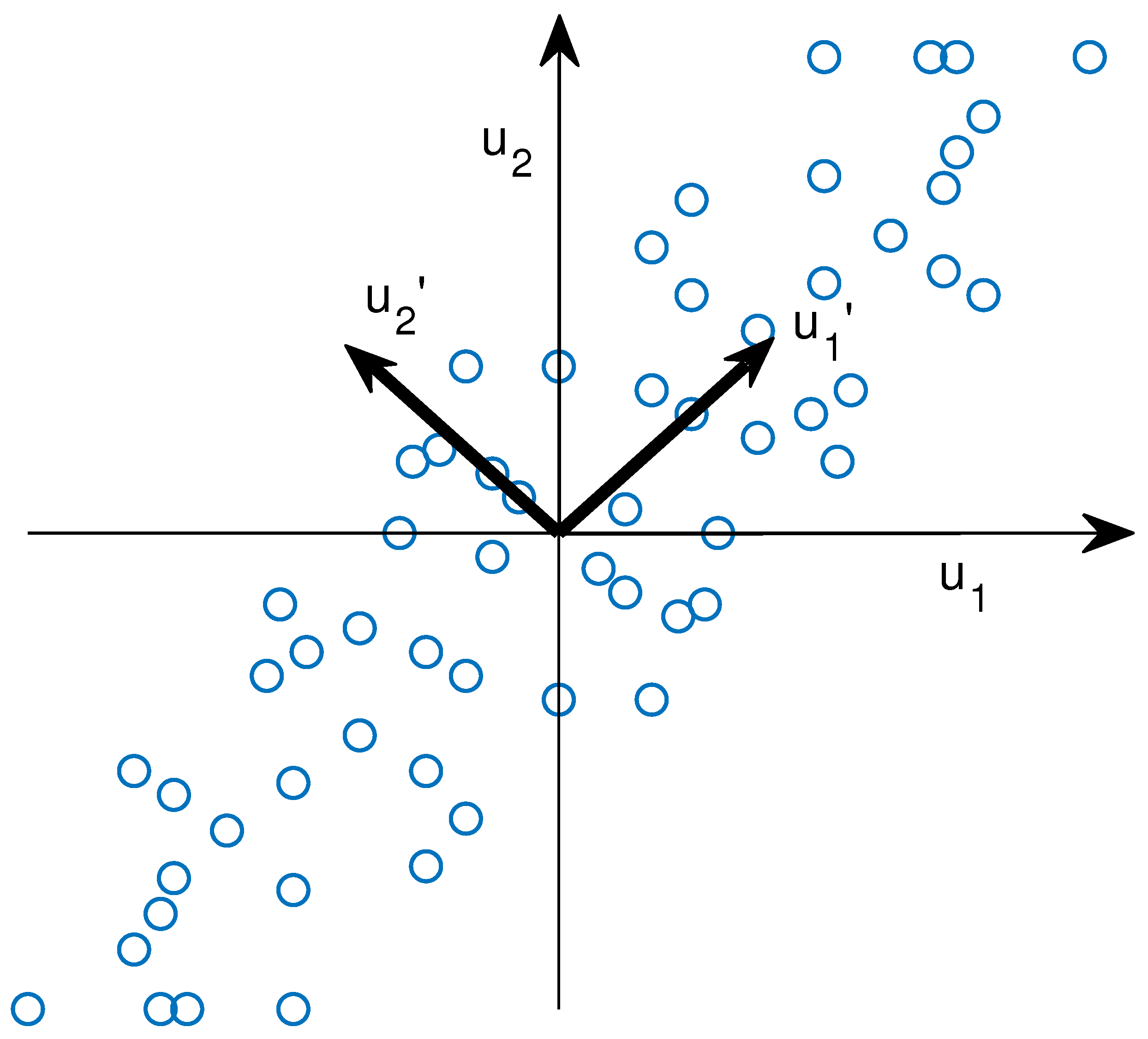

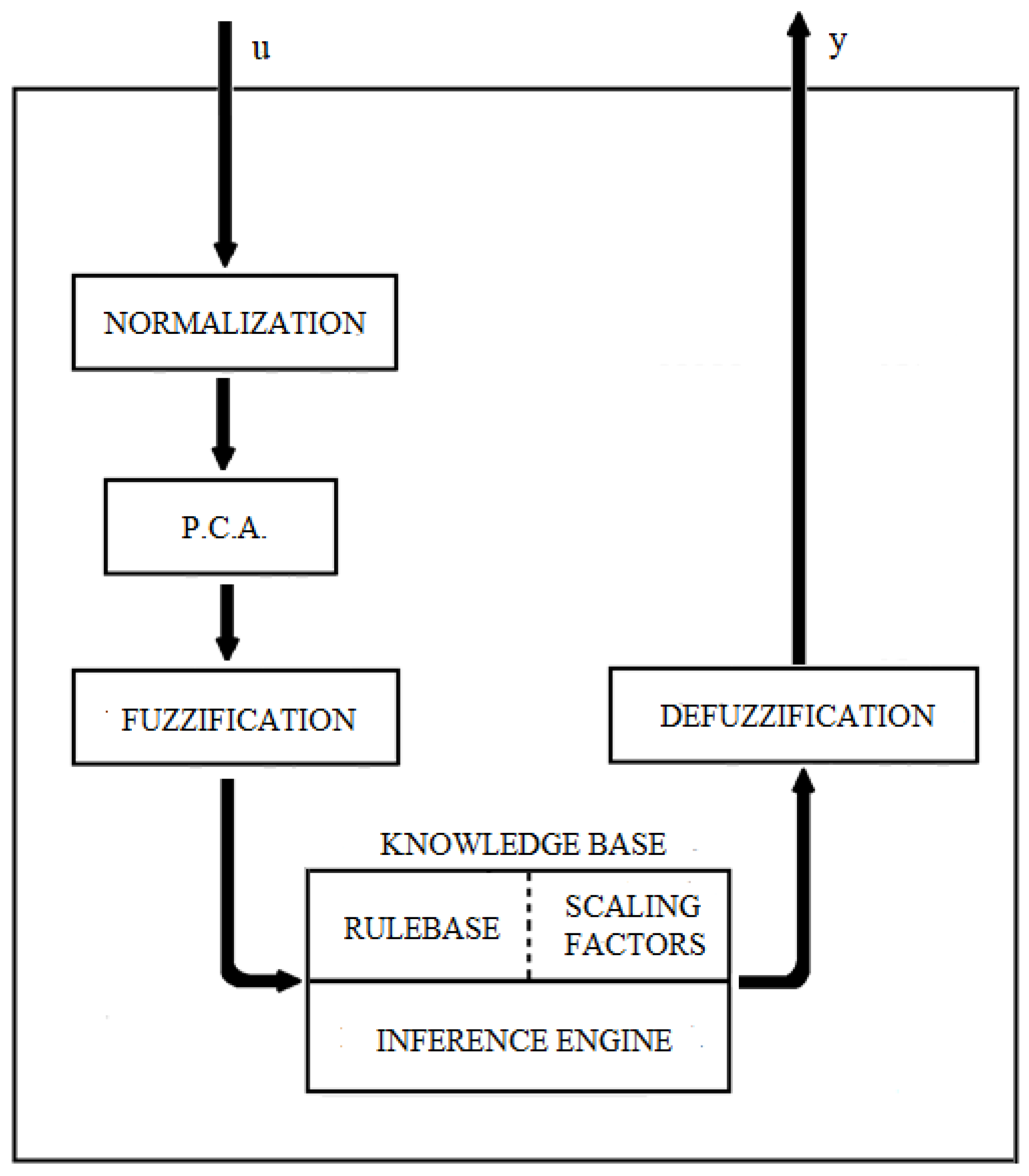
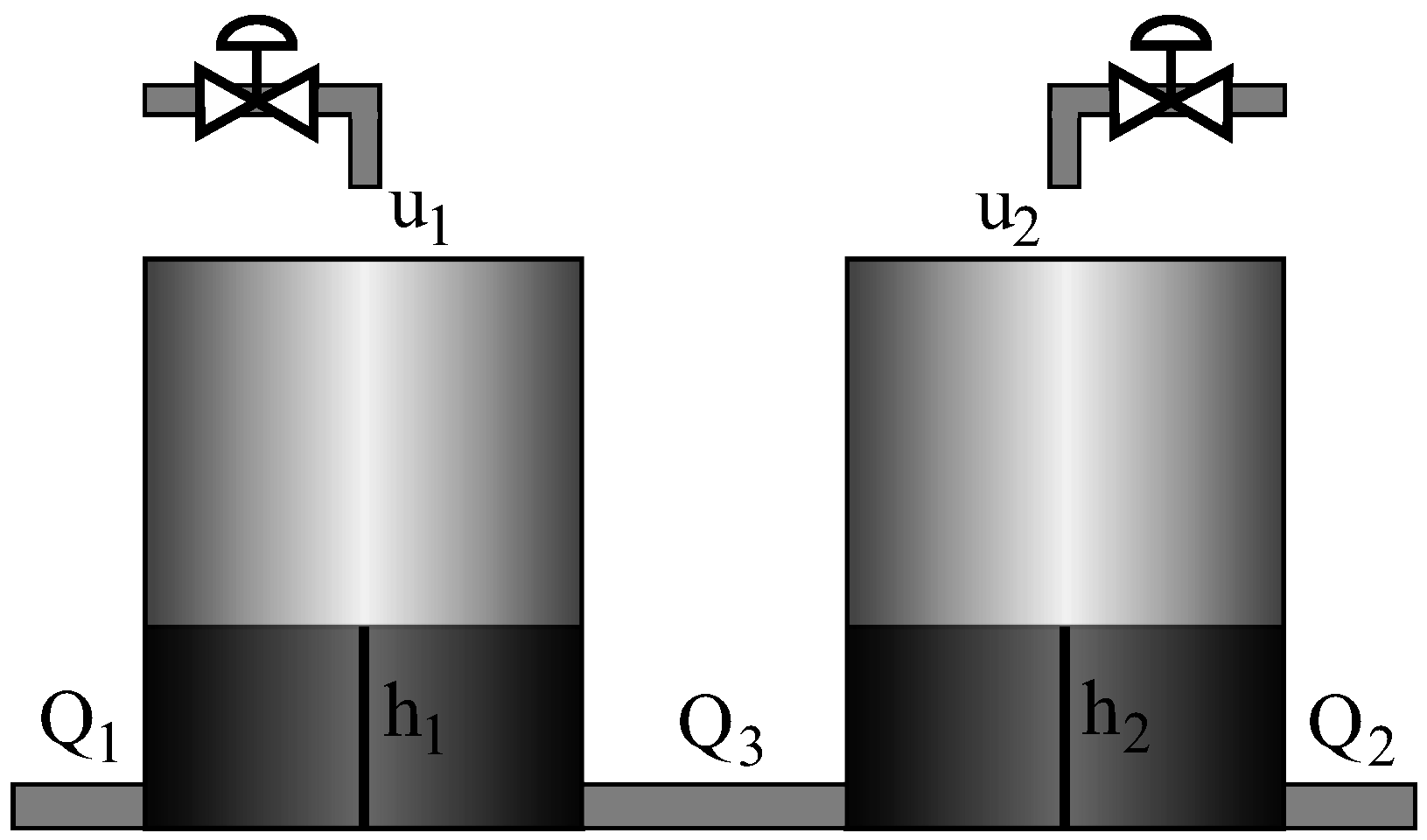
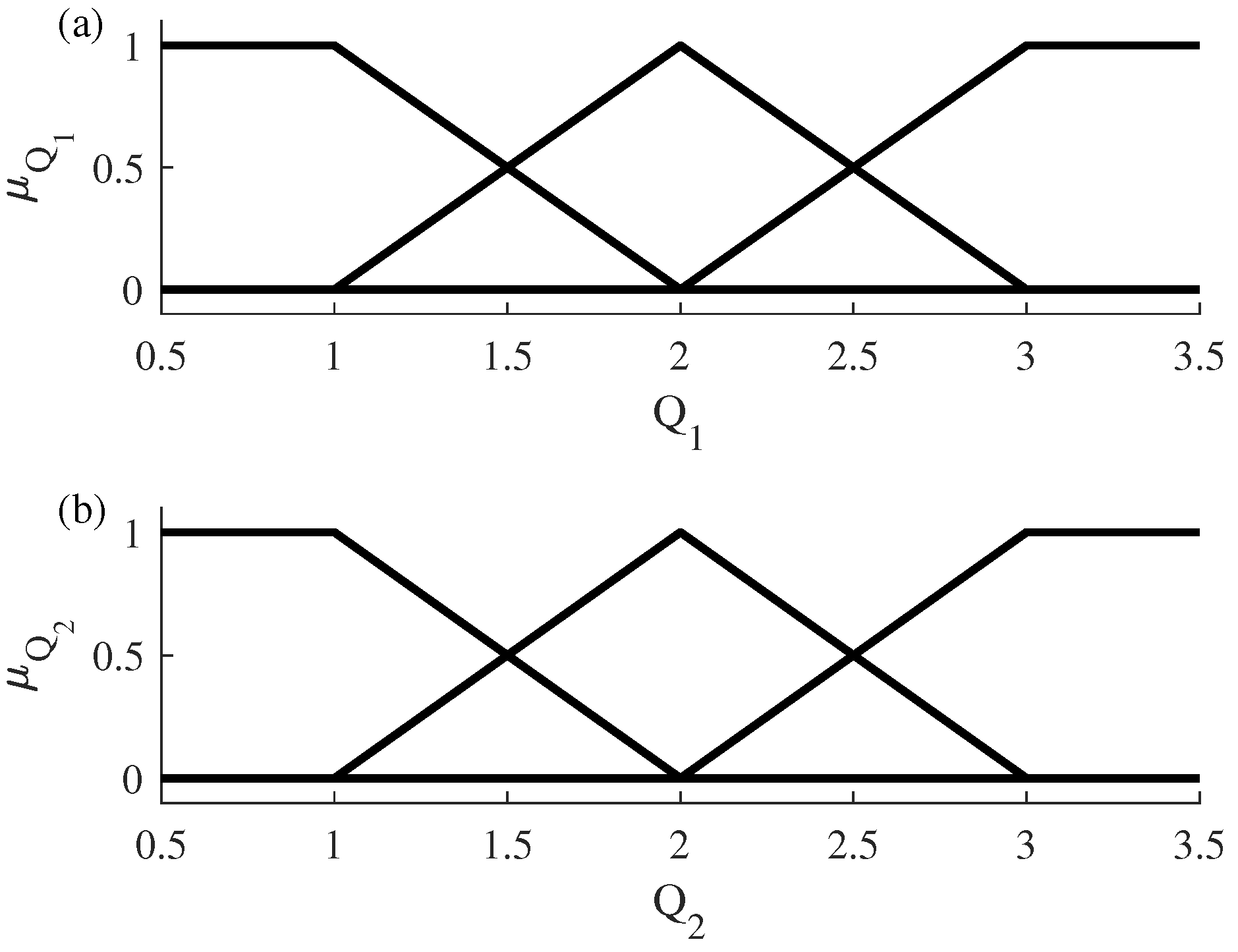
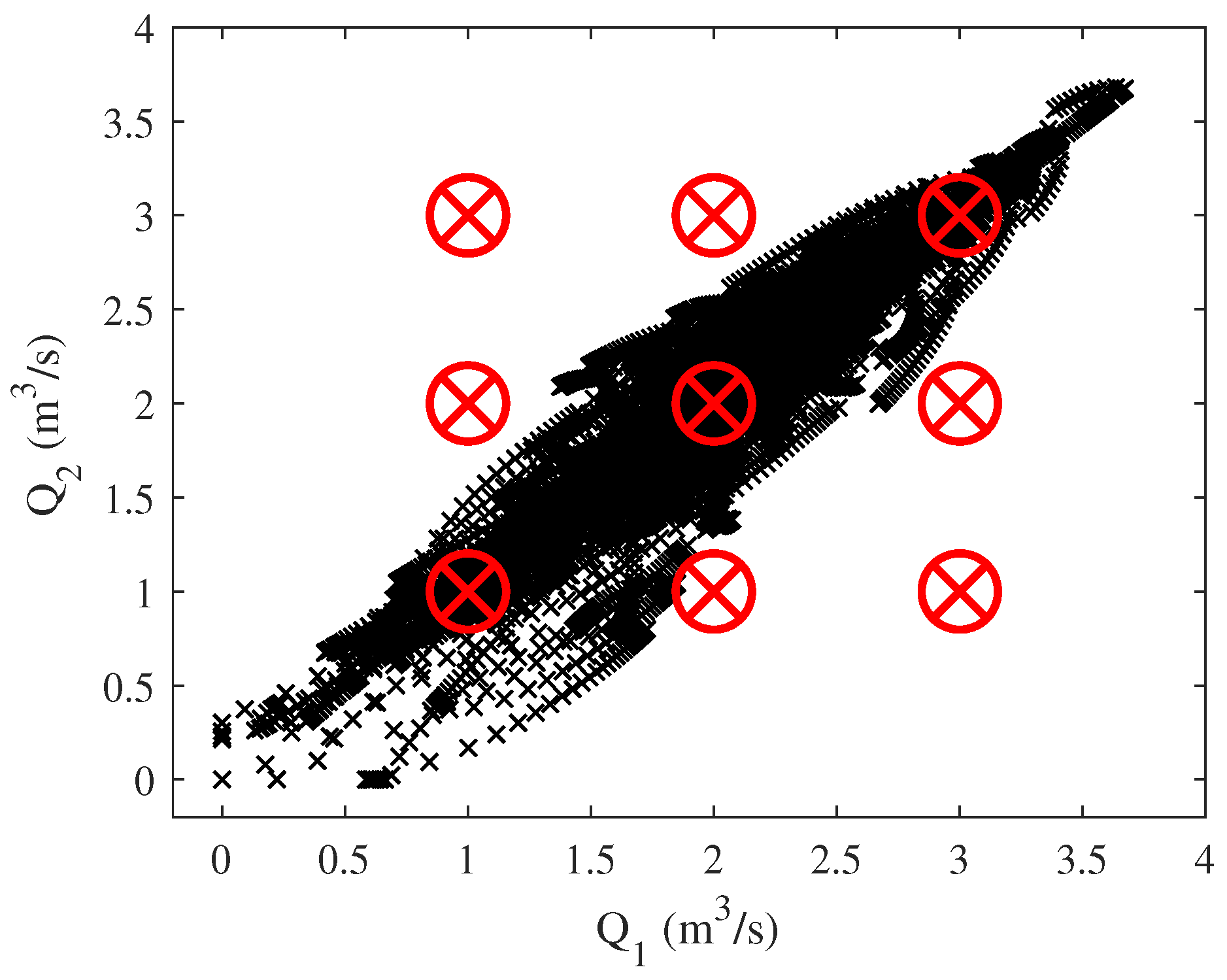

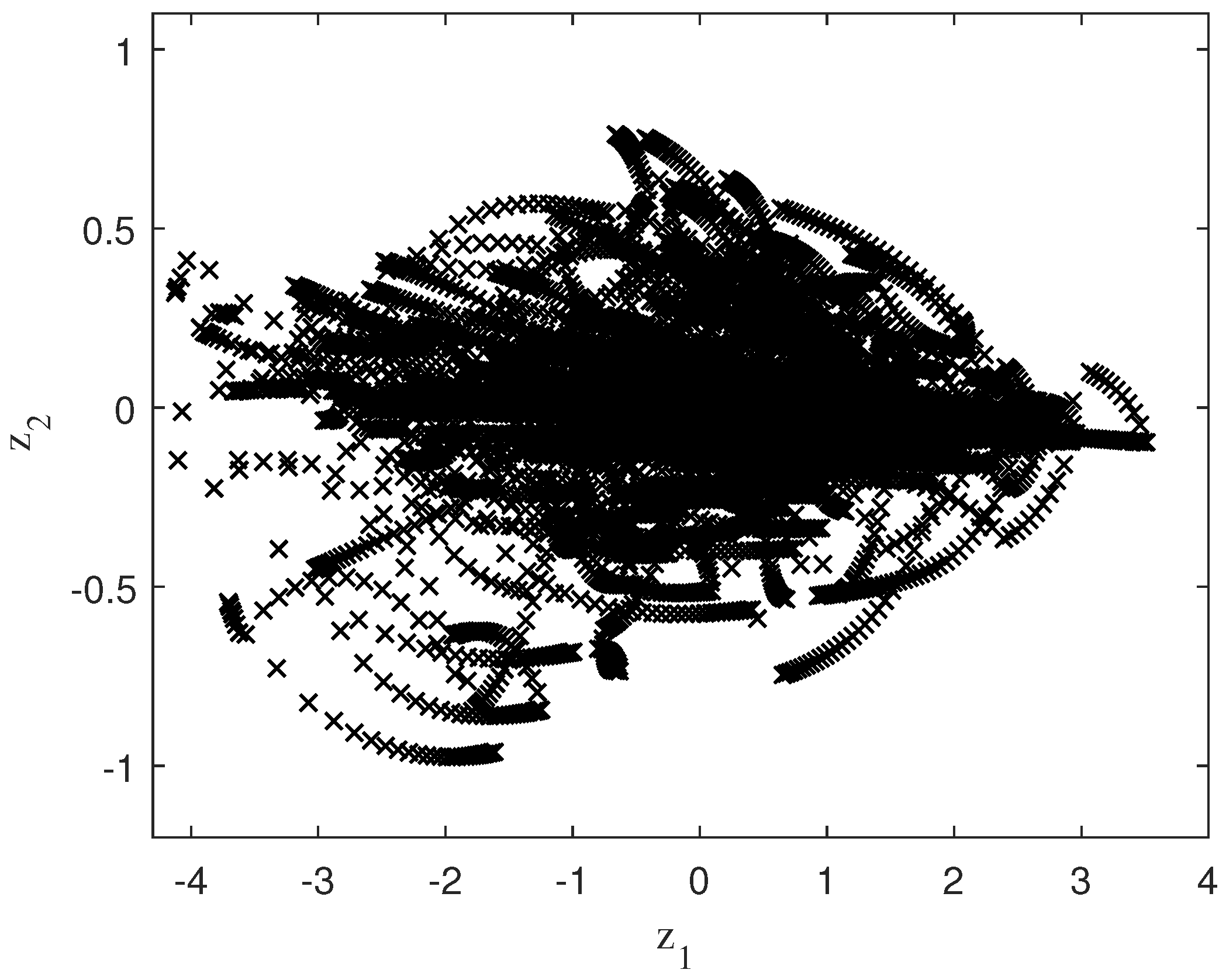
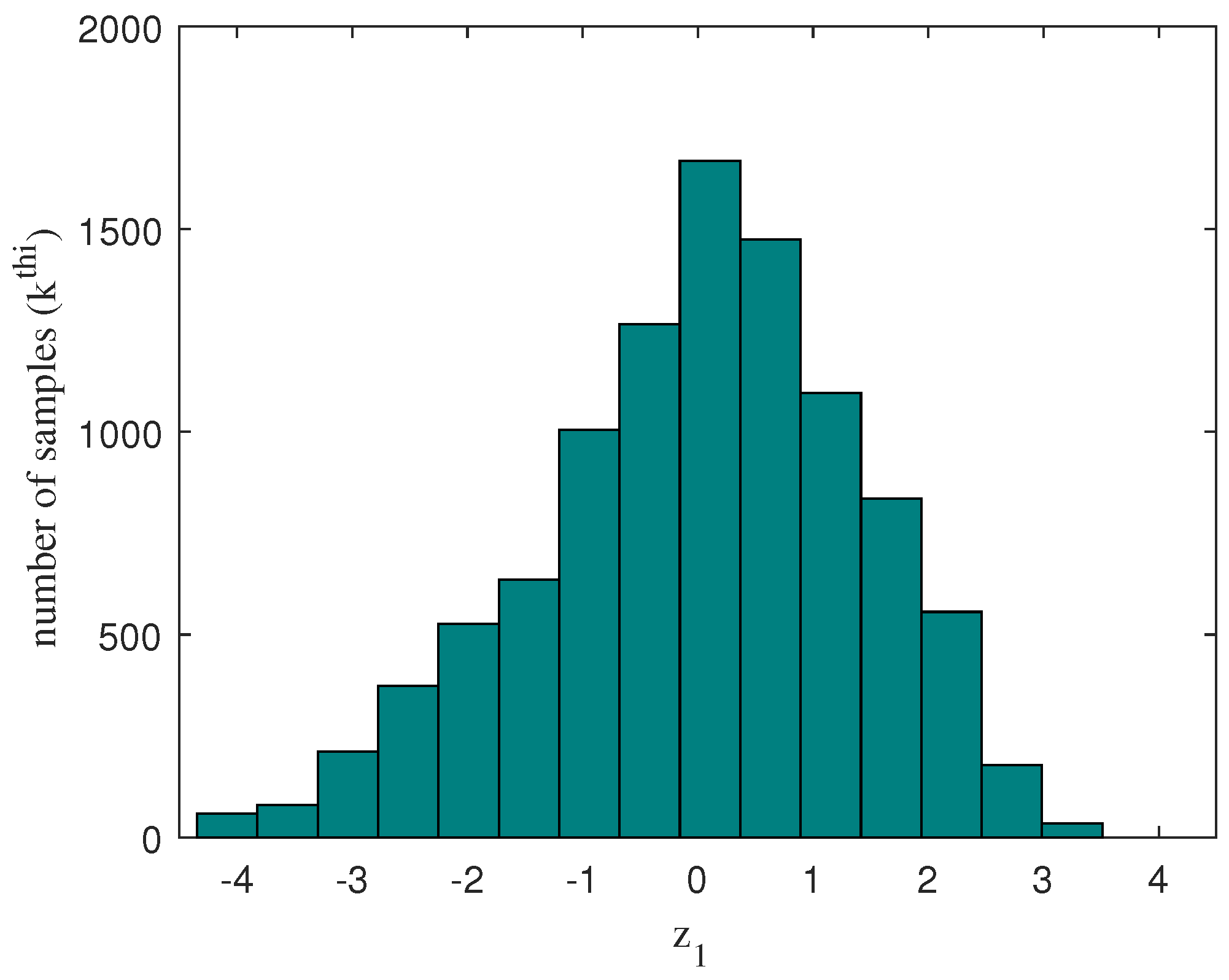

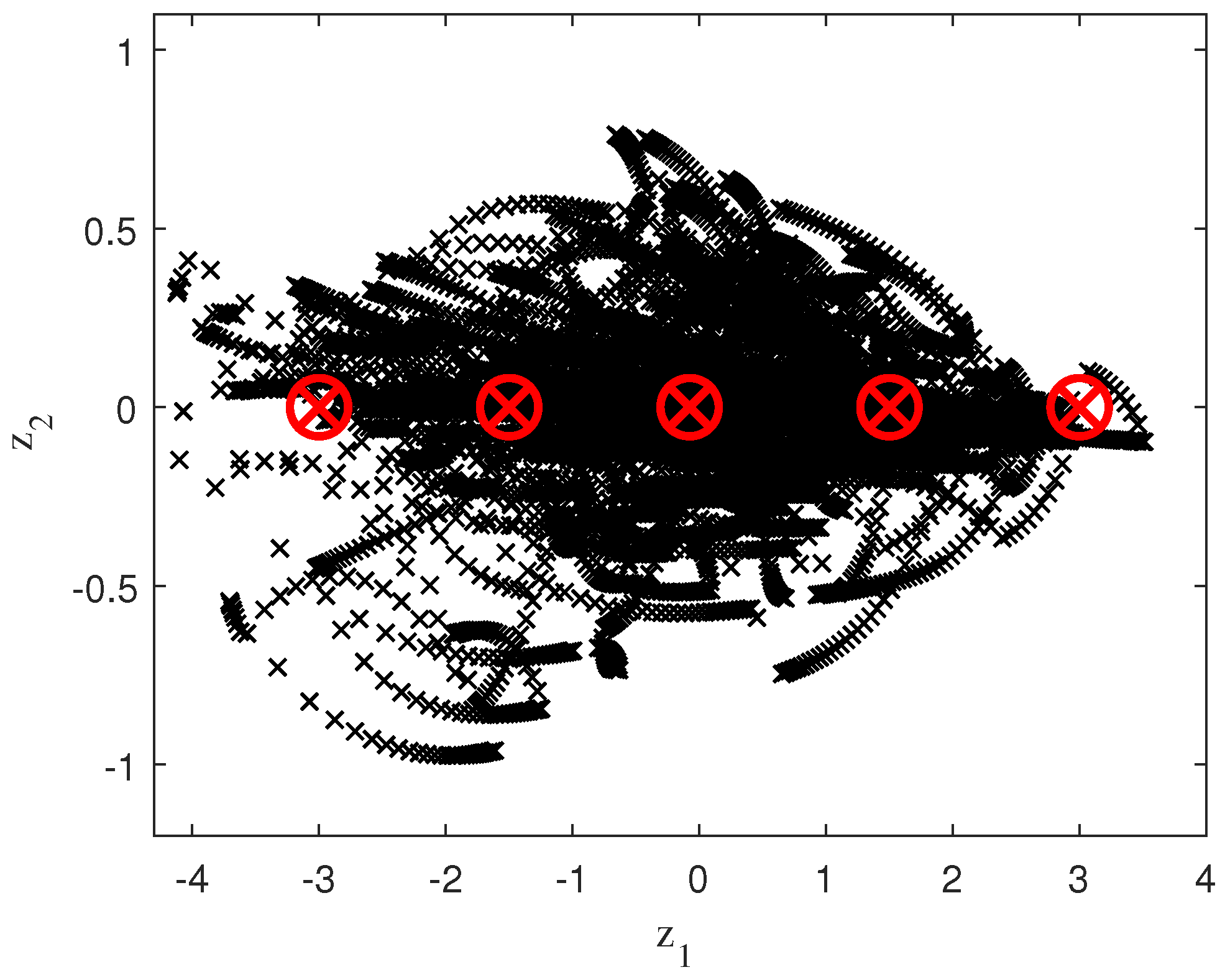
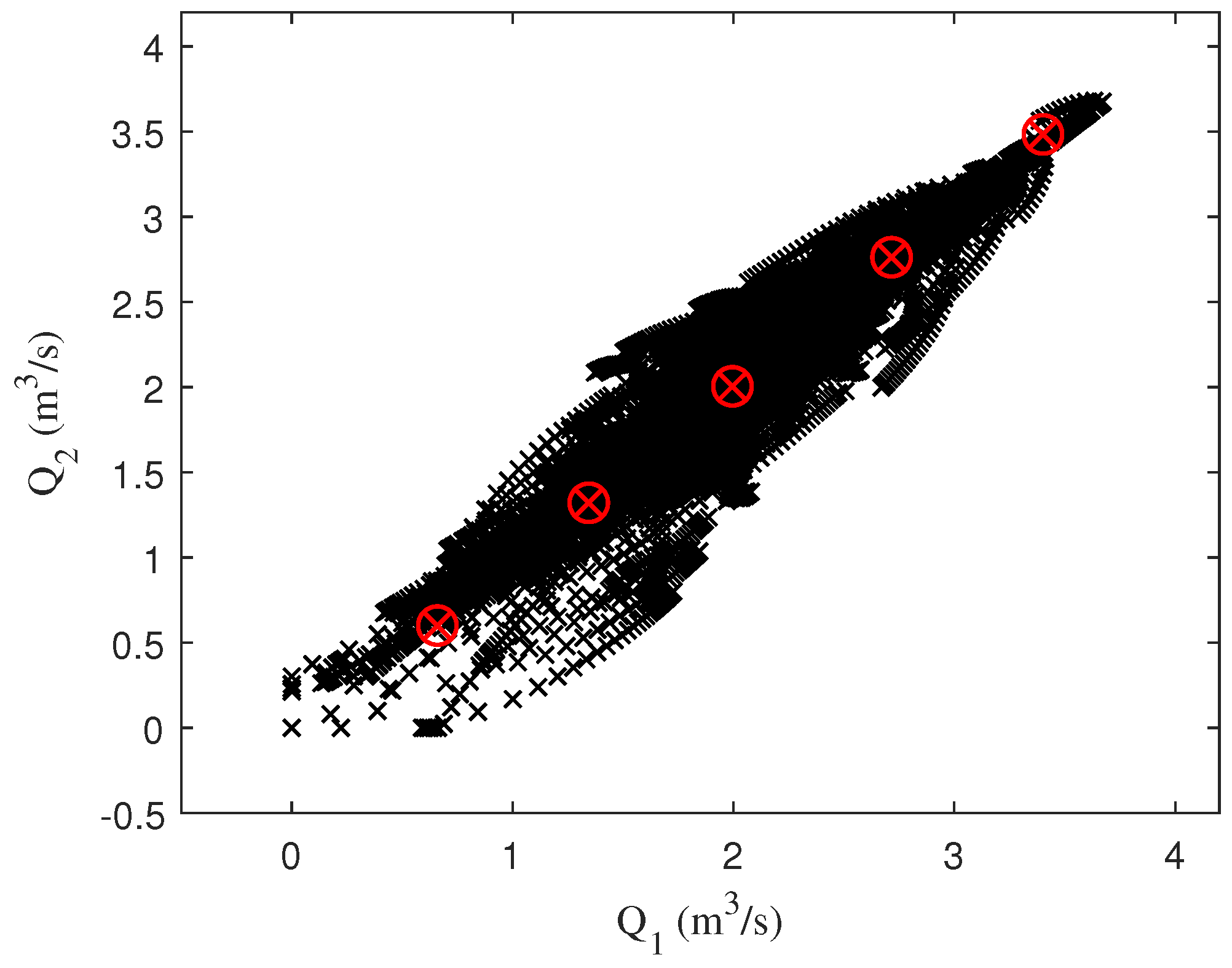
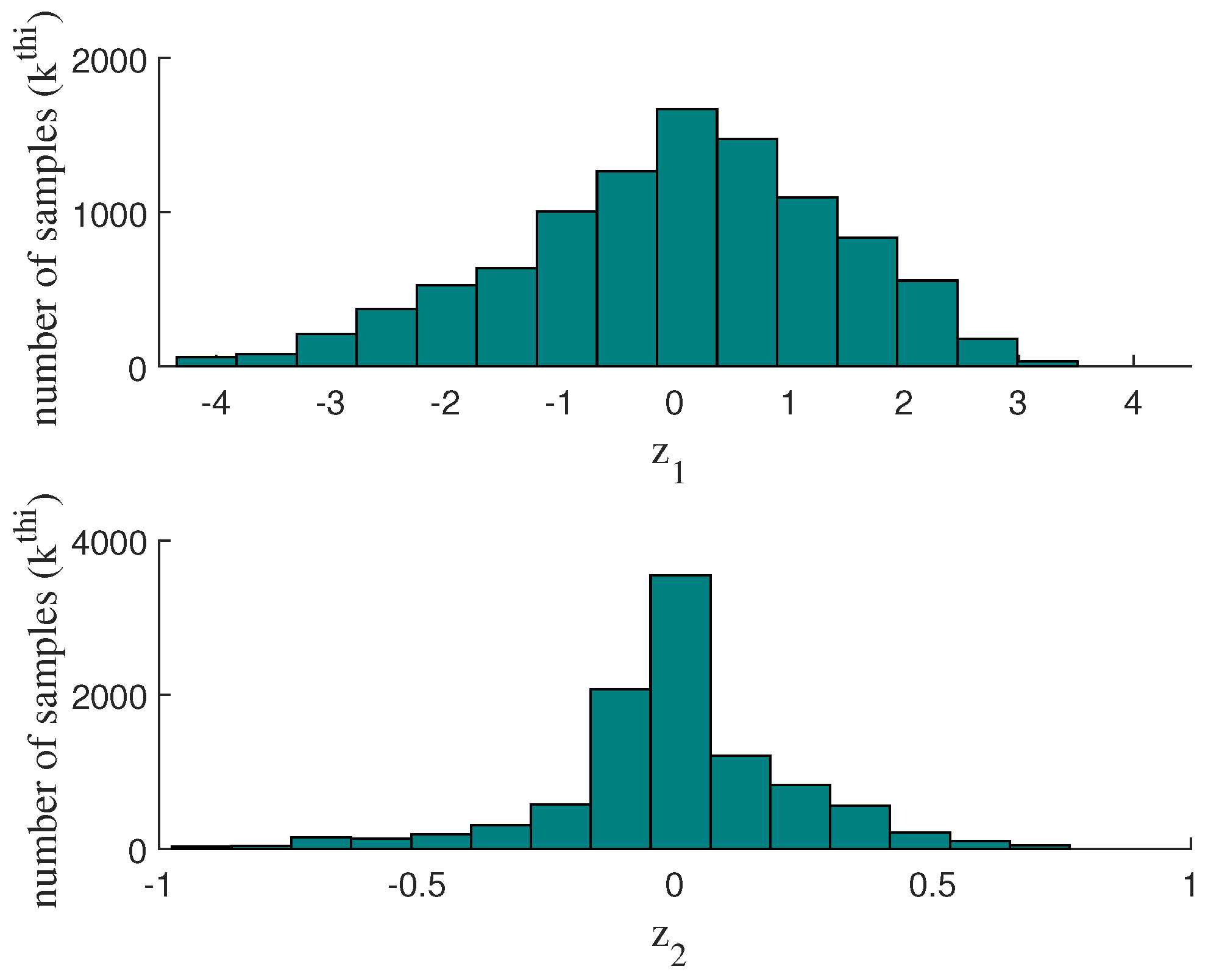
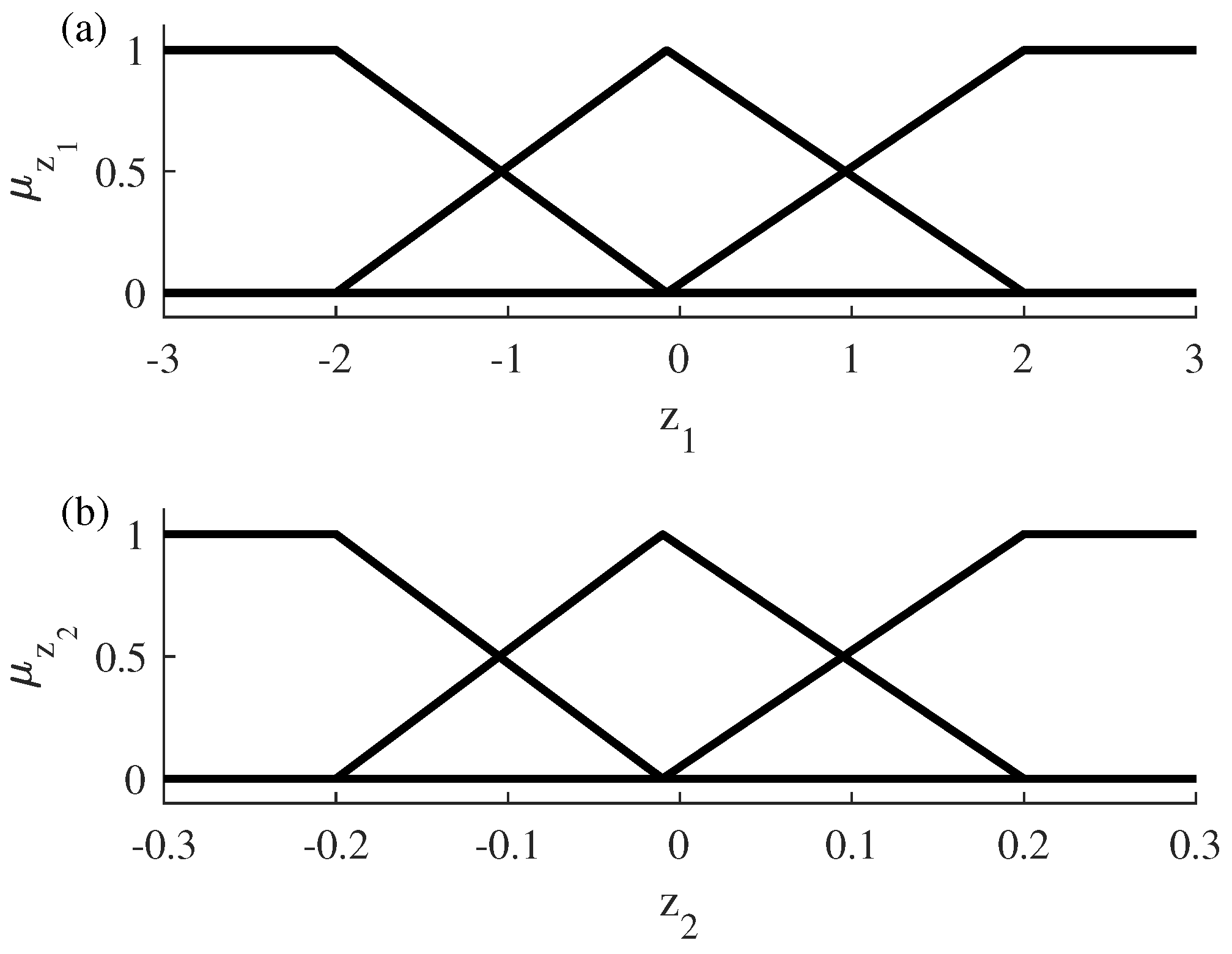
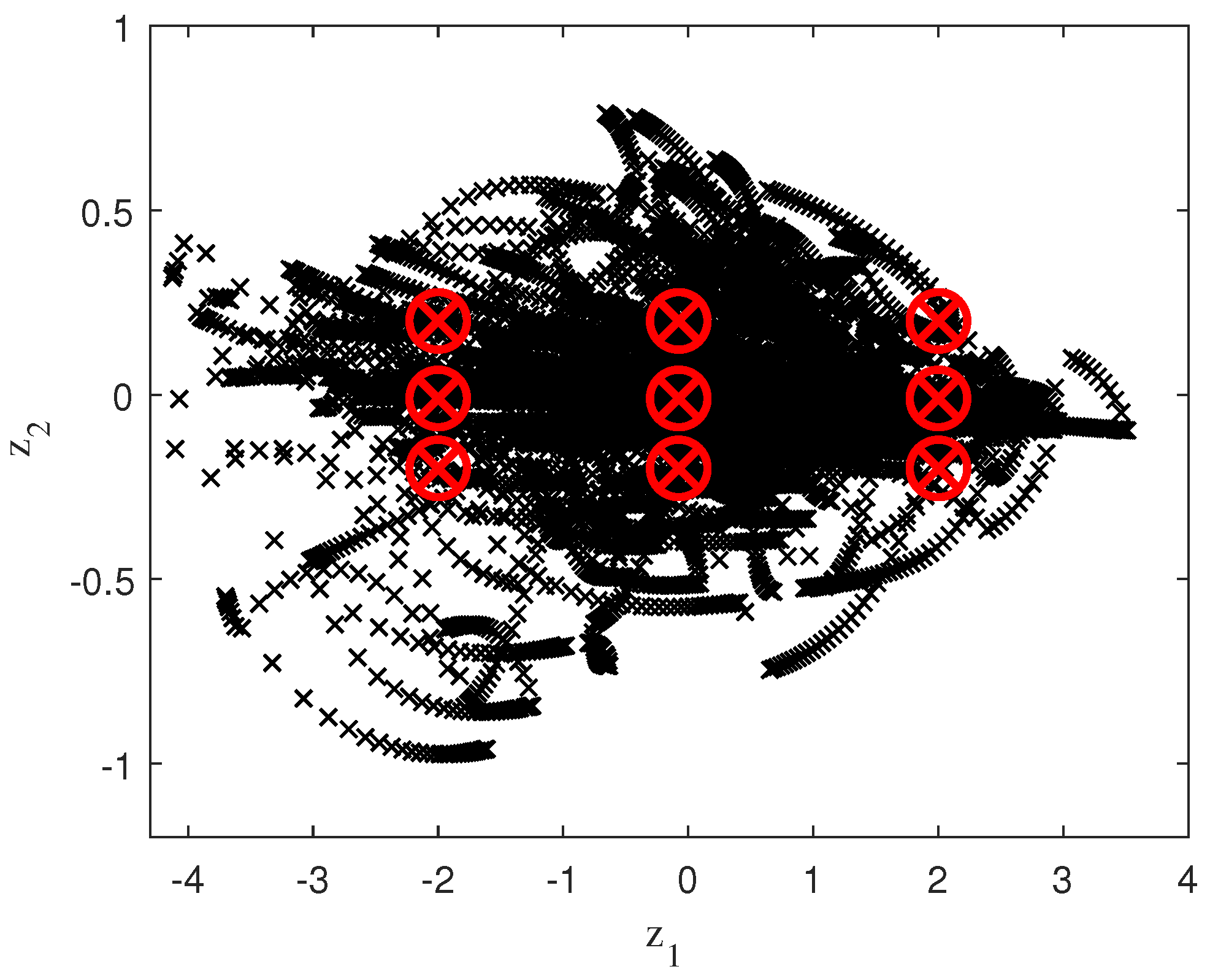
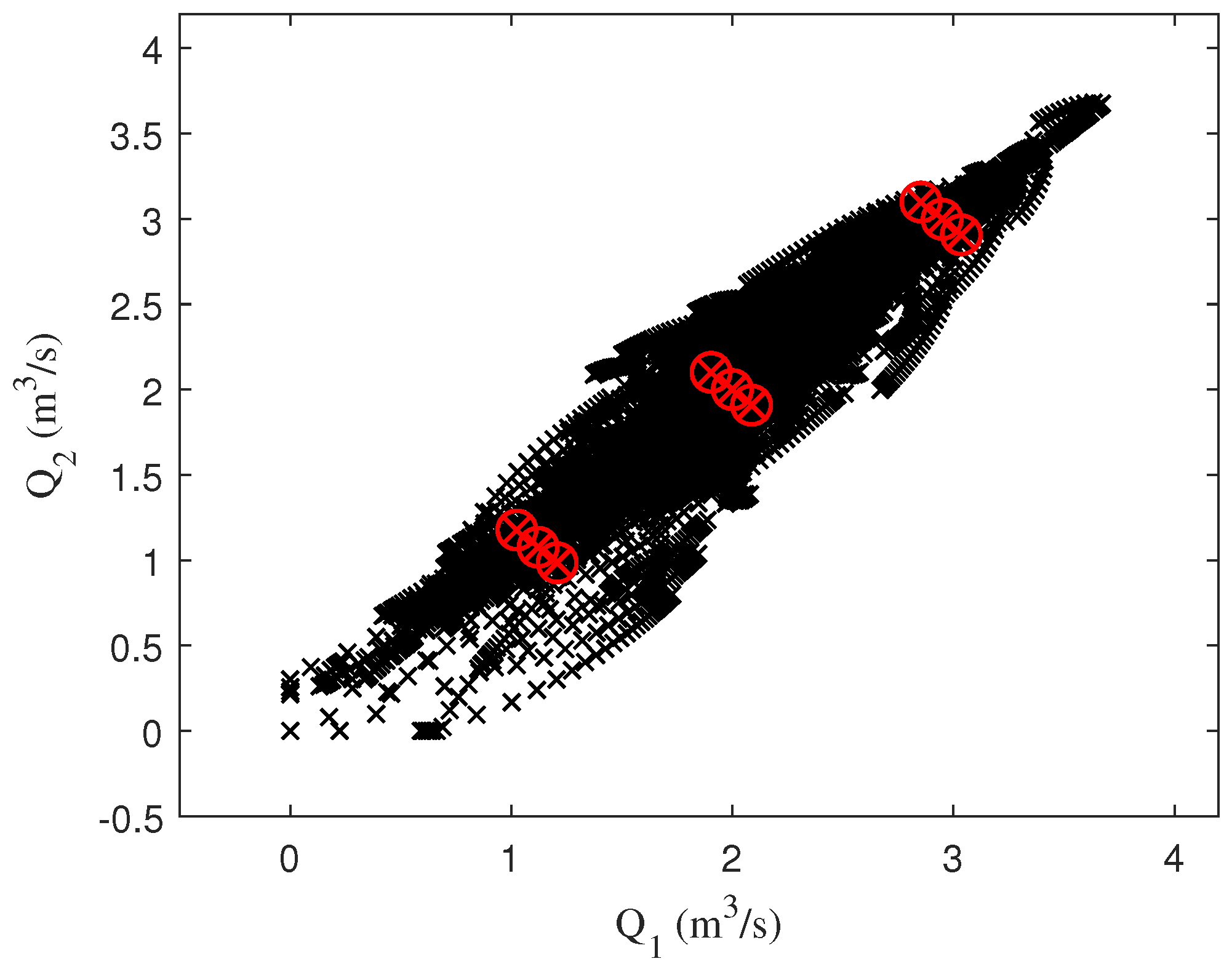

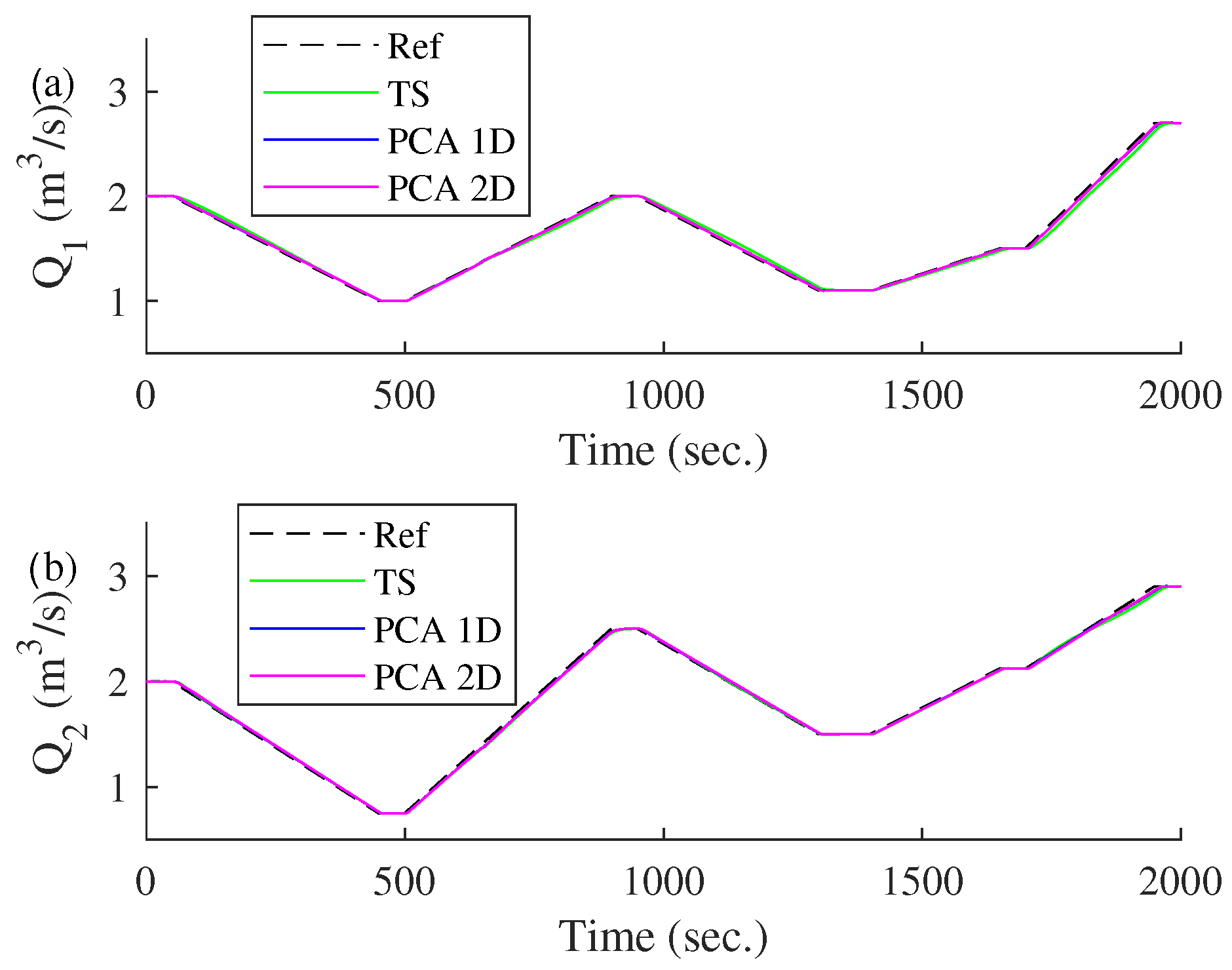
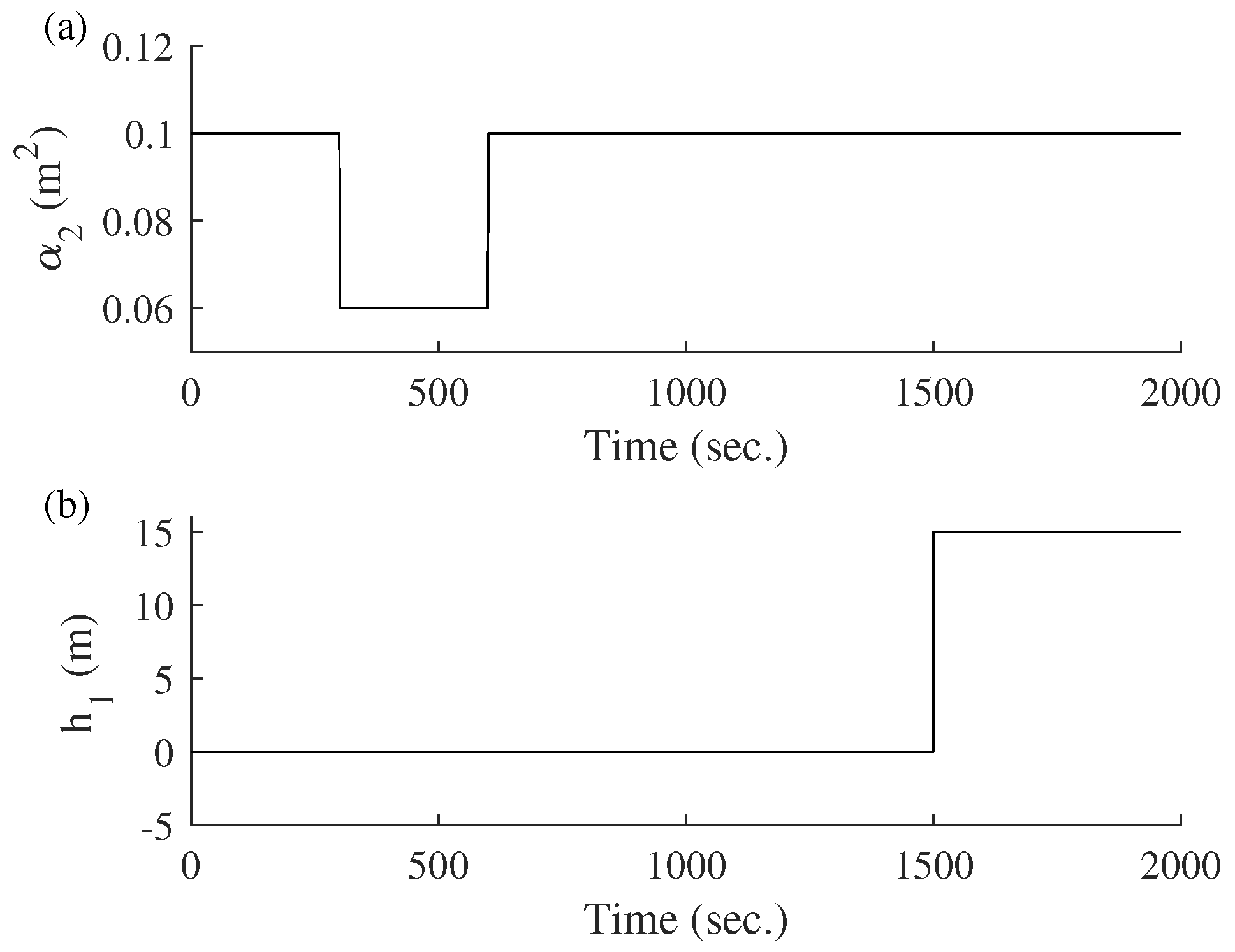

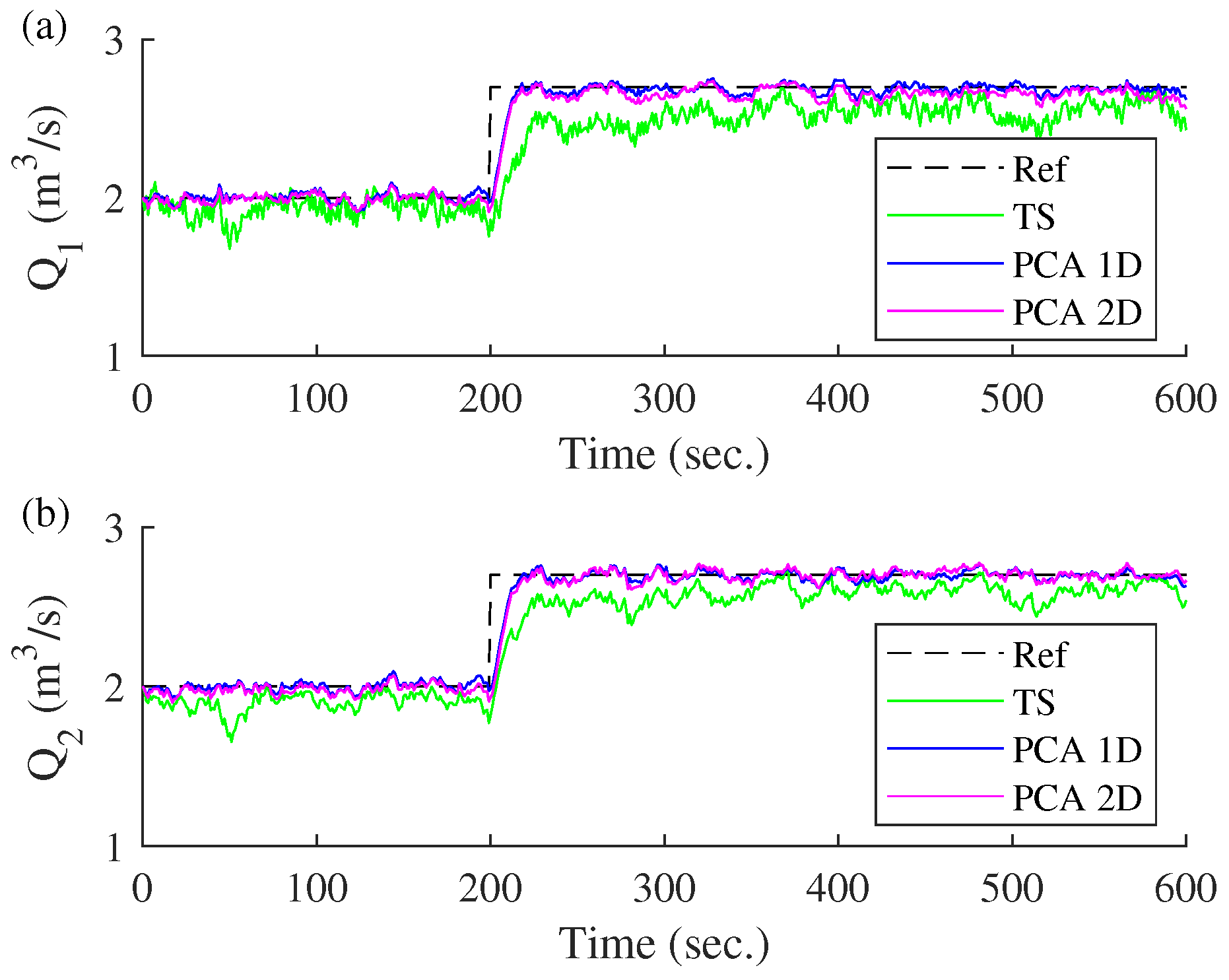
| Identification Type | Number of Rules | % Error RMSE in | % Error RMSE in | Mean of % Error RMSE |
|---|---|---|---|---|
| Generalized T–S | 9 | 0.419 | 0.396 | 0.408 |
| T–S PCA 1D | 5 | 0.418 | 0.411 | 0.415 |
| T–S PCA 2D | 9 | 0.365 | 0.334 | 0.349 |
| Control Model | Number of Rules | % Error RMSE in | % Error RMSE in | Mean of % Error RMSE |
|---|---|---|---|---|
| Generalized T–S | 9 | 6.9621 | 4.7403 | 5.8512 |
| T–S PCA 1D | 5 | 4.8400 | 4.1510 | 4.4955 |
| T–S PCA 2D | 9 | 4.8027 | 4.0703 | 4.4365 |
| Control Model | Number of Rules | Mean of | Standard Deviation of | Mean of | Standard Deviation of |
|---|---|---|---|---|---|
| Generalized T–S | 9 | 2.5372 | 0.0728 | 2.5894 | 0.0604 |
| T–S PCA 1D | 5 | 2.6874 | 0.0286 | 2.6963 | 0.0287 |
| T–S PCA 2D | 9 | 2.6596 | 0.0361 | 2.7007 | 0.0333 |
Disclaimer/Publisher’s Note: The statements, opinions and data contained in all publications are solely those of the individual author(s) and contributor(s) and not of MDPI and/or the editor(s). MDPI and/or the editor(s) disclaim responsibility for any injury to people or property resulting from any ideas, methods, instructions or products referred to in the content. |
© 2025 by the authors. Licensee MDPI, Basel, Switzerland. This article is an open access article distributed under the terms and conditions of the Creative Commons Attribution (CC BY) license (https://creativecommons.org/licenses/by/4.0/).
Share and Cite
Al-Hadithi, B.M.; Gómez, J. Fuzzy Control of Multivariable Nonlinear Systems Using T–S Fuzzy Model and Principal Component Analysis Technique. Processes 2025, 13, 217. https://doi.org/10.3390/pr13010217
Al-Hadithi BM, Gómez J. Fuzzy Control of Multivariable Nonlinear Systems Using T–S Fuzzy Model and Principal Component Analysis Technique. Processes. 2025; 13(1):217. https://doi.org/10.3390/pr13010217
Chicago/Turabian StyleAl-Hadithi, Basil Mohammed, and Javier Gómez. 2025. "Fuzzy Control of Multivariable Nonlinear Systems Using T–S Fuzzy Model and Principal Component Analysis Technique" Processes 13, no. 1: 217. https://doi.org/10.3390/pr13010217
APA StyleAl-Hadithi, B. M., & Gómez, J. (2025). Fuzzy Control of Multivariable Nonlinear Systems Using T–S Fuzzy Model and Principal Component Analysis Technique. Processes, 13(1), 217. https://doi.org/10.3390/pr13010217






